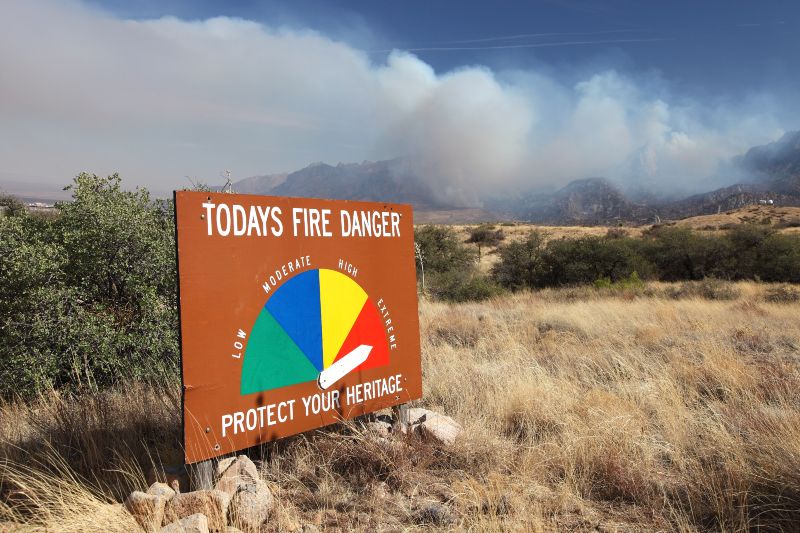Essential Info for Homeowners in Wildfire-Prone Zones

Protect Your Home From Wildfires in Santa Cruz & Monterey County
Wildfires have become increasingly prevalent across California. This growing threat has created a demand for proactive fire-proofing and property protection. At Knox Roofing, we are dedicated to the safety of our Santa Cruz and Monterey County communities. We work with homeowners to explore proactive measures that protect and prepare their homes for wildfires, ensuring peace of mind and resilience in the face of nature’s challenges.
The Reality of California Wildfires
California’s climate creates the perfect conditions for wildfires, which were once primarily seen during the windier summer months and early fall. However, the growing effects of climate change have significantly increased the risk of fires year-round, with devastating consequences for those who are unprepared. It is crucial to take proactive measures to safeguard your property and minimize the risks associated with this ever-present threat.
Understanding the Risks
Fire-prone regions are defined by extended droughts, dense areas of dehydrated vegetation, and strong winds. Fires generate burning materials known as embers, which are often made up of vegetation or wood. Because embers are extremely lightweight, they can travel from the original fire site when carried by the wind. These airborne threats are the primary cause of many wildfire spreads in California, making embers a significant risk to homes and properties far beyond the fire’s initial location.
Ways to Protect Your Home From Wildfires
Evacuating your family is the primary concern during a wildfire. However, once your loved ones are safe, the next worry is whether your home will be standing once the fire subsides. Knox Roofing has compiled a collection of strategies and techniques to prepare and protect homes from wildfires.
Exploring Home Hardening Techniques
Home hardening techniques are designed to reinforce structural elements. These strategies encompass a variety of techniques with the focus of limiting the risk of ignition and fire damage. When properly executed, proactive home hardening techniques can greatly increase the chances of home survival during a wildfire.
Fire-Resistant Roofing Materials
Airborne embers often land on top of structures when traveling toward the ground, making roofs especially vulnerable to ignition during wildfires. This highlights the importance of fire-retardant roofing. Knox Roofing encourages homeowners to prioritize inflammable materials engineered to withstand extreme heat and ember exposure, such as Class-A asphalt fiberglass composite shingles, concrete, and flat/barrel-shaped tiles.
- Ember Sealing
A fire-resistant roof is a valuable asset, but it offers limited protection if the rest of your home isn’t equally safeguarded against ember intrusion. Due to their small size, embers can penetrate structural cracks, gaps, and crevices, potentially igniting vulnerable areas of your property. To reduce these risks, use fire-proof caulking or metal mesh to seal gaps, eaves, and exposed vents. - Debris Removal
Dry vegetation and debris leave your home vulnerable to airborne embers. Maintaining a clean yard, free of potentially hazardous debris, is essential in preventing the spread of flames during a wildfire. This may include removing leaves, branches, and dead vegetation from your landscape, routine gutter cleanings, and roof maintenance. - Chimney Maintenance
A poorly maintained chimney is always a fire hazard. This is particularly true during a wildfire. To deter embers that may otherwise ignite the debris in your chimney, protect your home by installing and maintaining chimney spark arrestors.
Defensible Space Creation
Creating defensible space is an integral element of fire-proofing your home. This landscaping practice is designed to reinforce the perimeter of your property by creating and maintaining three safe zones: immediate, intermediate, and extended. When properly configured and managed, creating defensible space can hinder or stop the spread of fire.
- Immediate Zone
The immediate zone in your defensive space design is closest to your structure, encompassing all elements zero to five feet from your home’s foundation. To protect this space, we recommend the following:- Remove dry vegetation and leaves from gutters and landscaping
- Remove nearby firewood and other potentially flammable materials
- Utilize non-combustible landscaping materials
- Remove combustible/flammable materials from outdoor structures
- Intermediate Zone
The intermediate zone is the middle section of defensible space, including the area between five and 30 feet from the structure of your home. Protecting this area requires proactive lawn maintenance, including:- Routine lawn care
- Trim and control overgrown vegetation
- Make sure there is ample space between shrubs and trees
- Remove overhanging tree branches near roofs and/or power lines
- Extended Zone
The extended zone includes any portion of the property further than 30 feet from your home structure. To shield this space from the risk of wildfire, we recommend:- Periodically thin any dense vegetation and remove decayed plants
- Employ fire-resistant landscaping practices and materials
- Keep driveway and roadway access clear to facilitate emergency response
The Importance of Community Engagement
To protect your home and those around you, wildfire prevention must be viewed as a collective effort and communal responsibility. Knox Roofing encourages homeowners to get connected with local initiatives and Firewise programs. These shared resources foster the collaboration needed to lessen and/or mitigate wildfire devastation.
Discover More Ways to Protect Your Home From Wildfires
While wildfires may be inevitable, property devastation doesn’t have to be. Take a proactive approach to safeguarding your home with Knox Roofing. We are Santa Cruz and Monterey County’s premier choice for fire-resistant roofing and wildfire preparation. Contact us today to learn more about how to protect your home from wildfires.
